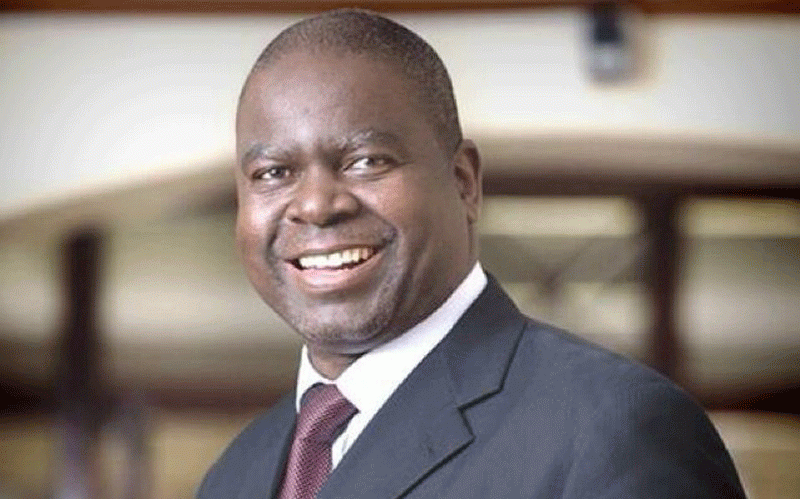
TOTAL revenues in the country's postal and telecommunications sector increased by 101% to $96,15 billion in the third quarter of this year, mostly due to data usage as more services migrate to the digital sphere.
The industry earned $47,77 billion last year.
Presenting the key trends observed in the sector during the third quarter of this year, Postal and Telecommunications Regulatory Authority of Zimbabwe (Potraz) director general Gift Machengete said all sub-sectors registered growth in revenue.
Internet access provider (IAP) revenue surged by 104,8% to $30,86 billion while overall revenue from the postal and courier sector jumped by 49,4% to $3,9 billion.
Total mobile operator revenue increased by 103,9% to record $61,39 billion.
IAP operating expenses surged by 52,9% to $18,25 billion while mobile operators' operating expenses rose by 40,5% to $2,9 billion.
According to Machengete, across all markets, the increase in operational costs was less than the growth in revenue.
“The sector has continued to grow as more services move to the digital space, contributing to increased demand and consumption of telecommunication services,” he said.
- Econet tariffs shoot up
- ‘Media freedom under the yoke’
- Potraz moves to curb ‘harmful’ content
- RBZ, Potraz bar bulk airtime purchases
Keep Reading
“This growth has been supported by the availability of the internet, which is increasingly becoming more accessible across the country.
“The sector is expected to grow exponentially with increased adoption of ICTS, operator investment and innovation efforts as well as the Authority's efforts to close the digital divide.”
However, Machengete said the industry was still suffering from a number of issues including a high rate of inflation, a credit crunch, a decline in real disposable incomes, and a shortage of foreign currency.
The increasing load-shedding has created a significant problem for operational effectiveness, affecting overall service quality and driving up service costs, he said.
“Inadequate foreign currency allocation continues to affect network expansion and maintenance efforts.
“Unlike other services that may have alternative local supply, the provision of telecommunication relies heavily on imports mainly in the form of equipment, software as well as bandwidth,” the Potraz chief said.
Total active mobile subscriptions climbed by 4% over the review period to reach 14,6 million, raising the mobile penetration rate by 3,6% to reach 95,9%.
There are now 9,7 million active internet and data subscriptions, a rise of 4,3%. As a result, in accordance with the increase in active subscriptions, the internet penetration rate increased by 2,6% to reach 63,9%.
The number of active fixed telephone lines rose by 2,8% to 290 810, and as a result, the fixed teledensity rose by 0,06% to 1,92%.
According to Potraz, a more digitalised economy has led to a steady rise in internet and data usage. In the time under consideration, mobile internet and data traffic reached 32 473.1 gigabytes, an increase of 26,1%.
Utilized international internet bandwidth capacity climbed as well, setting a record gain of 4,3% to 230 677Mbps.
Growth in both fixed and mobile voice traffic amounted to 3,08 billion minutes of mobile voice traffic. In comparison to the 2,35 billion minutes recorded in the second quarter of 2022, this represents a considerable 31,2% gain.
To record 84,6 million minutes, the total voice traffic on fixed telephones climbed by a negligible 1%.
Potraz blamed the rise in subscribers as the cause of the increase in voice traffic.
The overall volume of mail and couriers climbed by 4,5% to 547 125 pieces.
“The growth in total mail volumes experienced in the quarter under review comes after consecutive periods of persistent contraction.
“The growth could be a sign of recovery for the postal and courier sector,” Potraz boss noted.
The strain on the profitability and overall financial sustainability of the sector, according to Potraz's prognosis, is one major obstacle that must be addressed in the remaining months of the year.
“As this report has shown, although operating revenue increased in the third quarter of 2022, expenditure also rose across all subsectors. Prioritisation of the sector in terms of government expenditure, power availability, protection against vandalism, resource mobilisation, foreign currency availability amongst other issues, is pertinent,
“There is still great scope for the postal and courier sector.
“As the world becomes ever more connected and digitised, the postal and courier network, with good quality-of-service standards and practices, can serve as the physical connector of choice for e-commerce,” he said.
But according to Machengete, doing so will require more funding from the government, more specialised regulation, better performance from operators and more consumer awareness campaigns.











